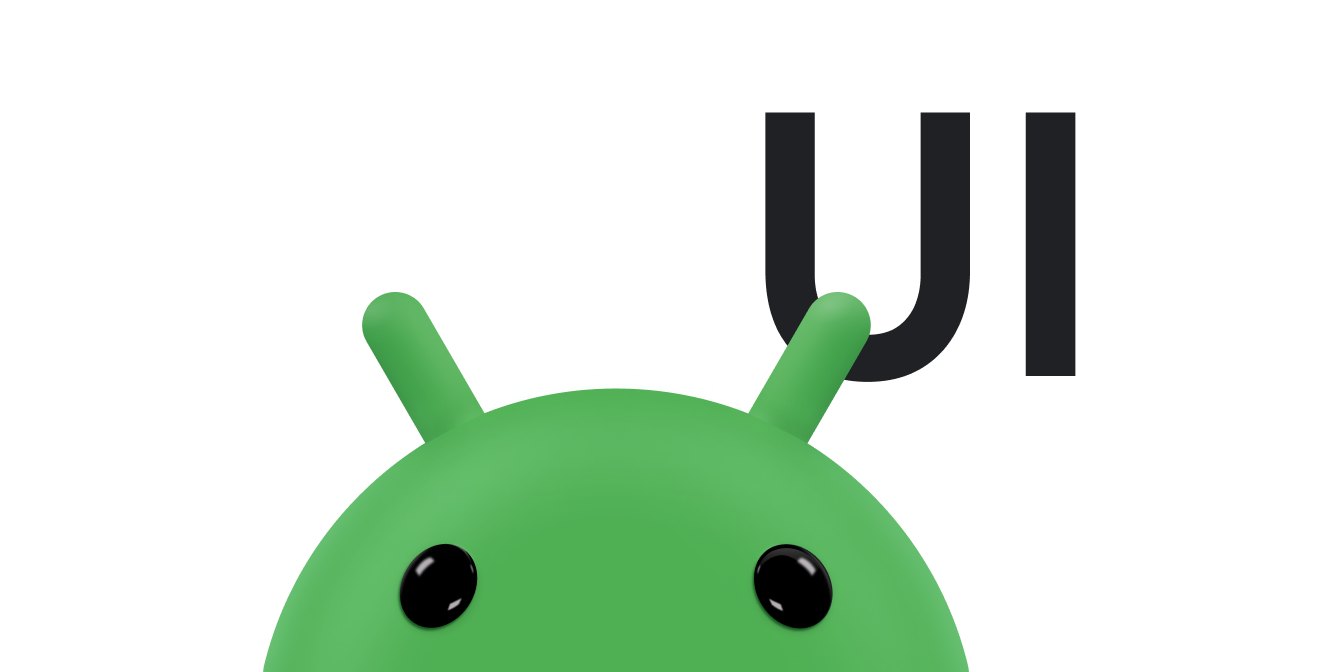多點觸控手勢是指同時使用多個指標 (手指) 輕觸螢幕。本文將說明如何偵測涉及多個指標的手勢。
追蹤多個指標
當多個指標同時輕觸螢幕時,系統會產生下列觸控事件:
ACTION_DOWN:當第一個指標輕觸螢幕時,系統會傳送這項事件。這會啟動手勢。這個指標的指標資料一律會位於MotionEvent中的索引0。ACTION_POINTER_DOWN:當其他指標在第一個指標後進入螢幕時,系統會傳送這項事件。您可以使用getActionIndex()取得剛剛向下移動的指標索引。ACTION_MOVE:在手勢發生變更時傳送,涉及任意數量的指標。ACTION_POINTER_UP:當非主要指標向上移動時傳送。您可以使用getActionIndex()取得剛剛向上移動的指標索引。ACTION_UP:當最後一個指標離開螢幕時傳送。ACTION_CANCEL:表示已取消整個手勢,包括所有指標。
開始和結束手勢
手勢是一系列以 ACTION_DOWN 事件開始,並以 ACTION_UP 或 ACTION_CANCEL 事件結束的事件。一次只能有一個手勢處於啟用狀態。動作「向下」、「移動」、「向上」和「取消」會套用至整個手勢。舉例來說,使用 ACTION_MOVE 的事件可在該時刻指出所有指標向下移動。
追蹤指標
使用指標的索引和 ID,追蹤 MotionEvent 中的個別指標位置。
- 索引:
MotionEvent會在陣列中儲存指標資訊。指標的索引是指標在這個陣列中的位置。大多數MotionEvent方法會使用指標索引做為參數,而非指標 ID。 - ID:每個指標也都有一個 ID 對應項目,可在觸控事件中持續保留,以便在整個手勢中追蹤個別指標。
個別指標會以未定順序顯示在動作事件中。因此,指標的索引可以從一個事件變更為下一個事件,但只要指標仍處於活動狀態,指標 ID 就保證會保持不變。請使用 getPointerId() 方法取得指標的 ID,以便在手勢的所有後續動作事件中追蹤指標。接著,針對連續動作事件,請使用 findPointerIndex() 方法,取得該動作事件中特定指標 ID 的指標索引。例如:
Kotlin
private var mActivePointerId: Int = 0 override fun onTouchEvent(event: MotionEvent): Boolean { ... // Get the pointer ID. mActivePointerId = event.getPointerId(0) // ... Many touch events later... // Use the pointer ID to find the index of the active pointer // and fetch its position. val (x: Float, y: Float) = event.findPointerIndex(mActivePointerId).let { pointerIndex -> // Get the pointer's current position. event.getX(pointerIndex) to event.getY(pointerIndex) } ... }
Java
private int mActivePointerId; public boolean onTouchEvent(MotionEvent event) { ... // Get the pointer ID. mActivePointerId = event.getPointerId(0); // ... Many touch events later... // Use the pointer ID to find the index of the active pointer // and fetch its position. int pointerIndex = event.findPointerIndex(mActivePointerId); // Get the pointer's current position. float x = event.getX(pointerIndex); float y = event.getY(pointerIndex); ... }
如要支援多個觸控指標,您可以在個別 ACTION_POINTER_DOWN 和 ACTION_DOWN 事件時間,將所有有效指標和 ID 快取。在 ACTION_POINTER_UP 和 ACTION_UP 事件中,從快取中移除指標。您可能會發現,這些快取 ID 有助於正確處理其他動作事件。舉例來說,在處理 ACTION_MOVE 事件時,請找出每個已快取的有效指標 ID 的索引,使用 getX() 和 getY() 函式擷取指標的座標,然後將這些座標與已快取的座標進行比較,找出移動的指標。
請僅在 ACTION_POINTER_UP 和 ACTION_POINTER_DOWN 事件中使用 getActionIndex() 函式。請勿將此函式與 ACTION_MOVE 事件搭配使用,因為這會一律傳回 0。
擷取 MotionEvent 動作
請使用 getActionMasked() 方法或相容性版本 MotionEventCompat.getActionMasked() 擷取 MotionEvent 的動作。與先前的 getAction() 方法不同,getActionMasked() 可搭配多個指標運作。會傳回不含指標索引的動作。對於具有有效指標索引的動作,請使用 getActionIndex() 傳回與該動作相關聯的指標索引,如以下程式碼片段所示:
Kotlin
val (xPos: Int, yPos: Int) = MotionEventCompat.getActionMasked(event).let { action -> Log.d(DEBUG_TAG, "The action is ${actionToString(action)}") // Get the index of the pointer associated with the action. MotionEventCompat.getActionIndex(event).let { index -> // The coordinates of the current screen contact, relative to // the responding View or Activity. MotionEventCompat.getX(event, index).toInt() to MotionEventCompat.getY(event, index).toInt() } } if (event.pointerCount > 1) { Log.d(DEBUG_TAG, "Multitouch event") } else { // Single touch event. Log.d(DEBUG_TAG, "Single touch event") } ... // Given an action int, returns a string description. fun actionToString(action: Int): String { return when (action) { MotionEvent.ACTION_DOWN -> "Down" MotionEvent.ACTION_MOVE -> "Move" MotionEvent.ACTION_POINTER_DOWN -> "Pointer Down" MotionEvent.ACTION_UP -> "Up" MotionEvent.ACTION_POINTER_UP -> "Pointer Up" MotionEvent.ACTION_OUTSIDE -> "Outside" MotionEvent.ACTION_CANCEL -> "Cancel" else -> "" } }
Java
int action = MotionEventCompat.getActionMasked(event); // Get the index of the pointer associated with the action. int index = MotionEventCompat.getActionIndex(event); int xPos = -1; int yPos = -1; Log.d(DEBUG_TAG,"The action is " + actionToString(action)); if (event.getPointerCount() > 1) { Log.d(DEBUG_TAG,"Multitouch event"); // The coordinates of the current screen contact, relative to // the responding View or Activity. xPos = (int)MotionEventCompat.getX(event, index); yPos = (int)MotionEventCompat.getY(event, index); } else { // Single touch event. Log.d(DEBUG_TAG,"Single touch event"); xPos = (int)MotionEventCompat.getX(event, index); yPos = (int)MotionEventCompat.getY(event, index); } ... // Given an action int, returns a string description public static String actionToString(int action) { switch (action) { case MotionEvent.ACTION_DOWN: return "Down"; case MotionEvent.ACTION_MOVE: return "Move"; case MotionEvent.ACTION_POINTER_DOWN: return "Pointer Down"; case MotionEvent.ACTION_UP: return "Up"; case MotionEvent.ACTION_POINTER_UP: return "Pointer Up"; case MotionEvent.ACTION_OUTSIDE: return "Outside"; case MotionEvent.ACTION_CANCEL: return "Cancel"; } return ""; }
其他資源
如要進一步瞭解輸入事件,請參閱下列參考資料:


